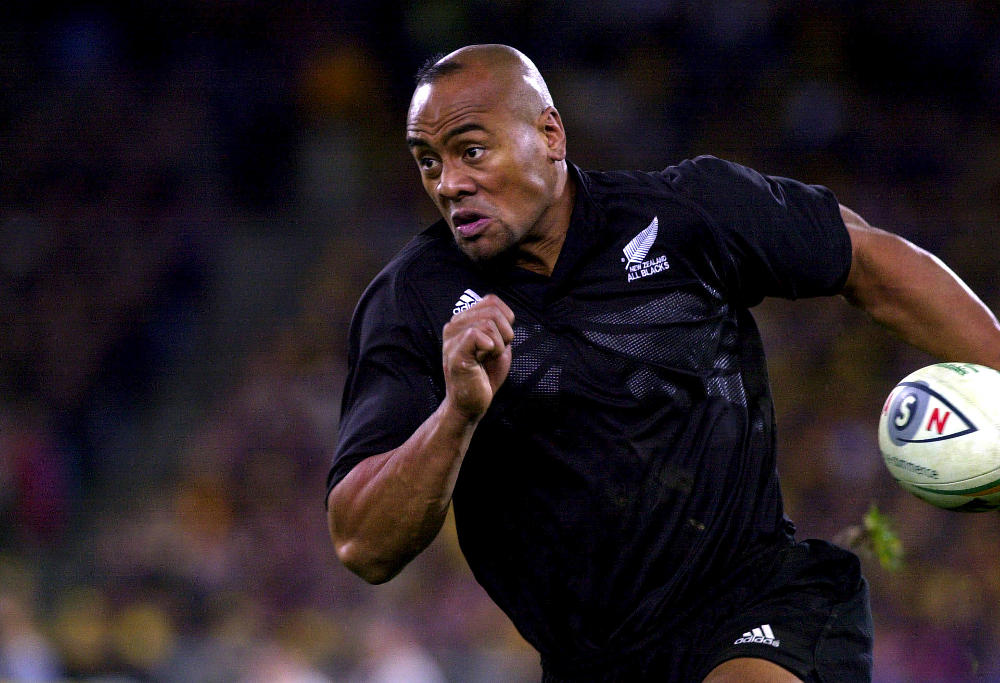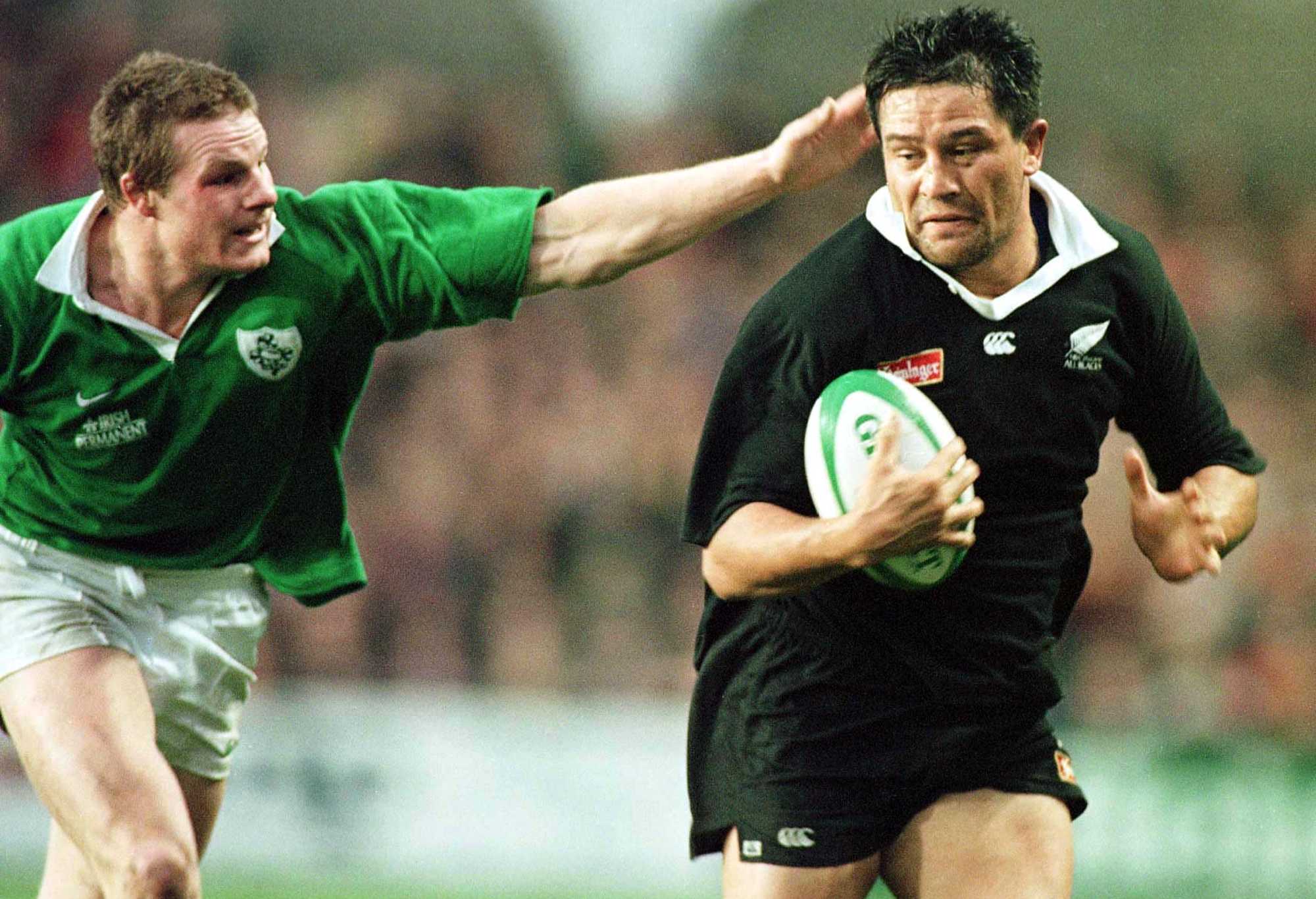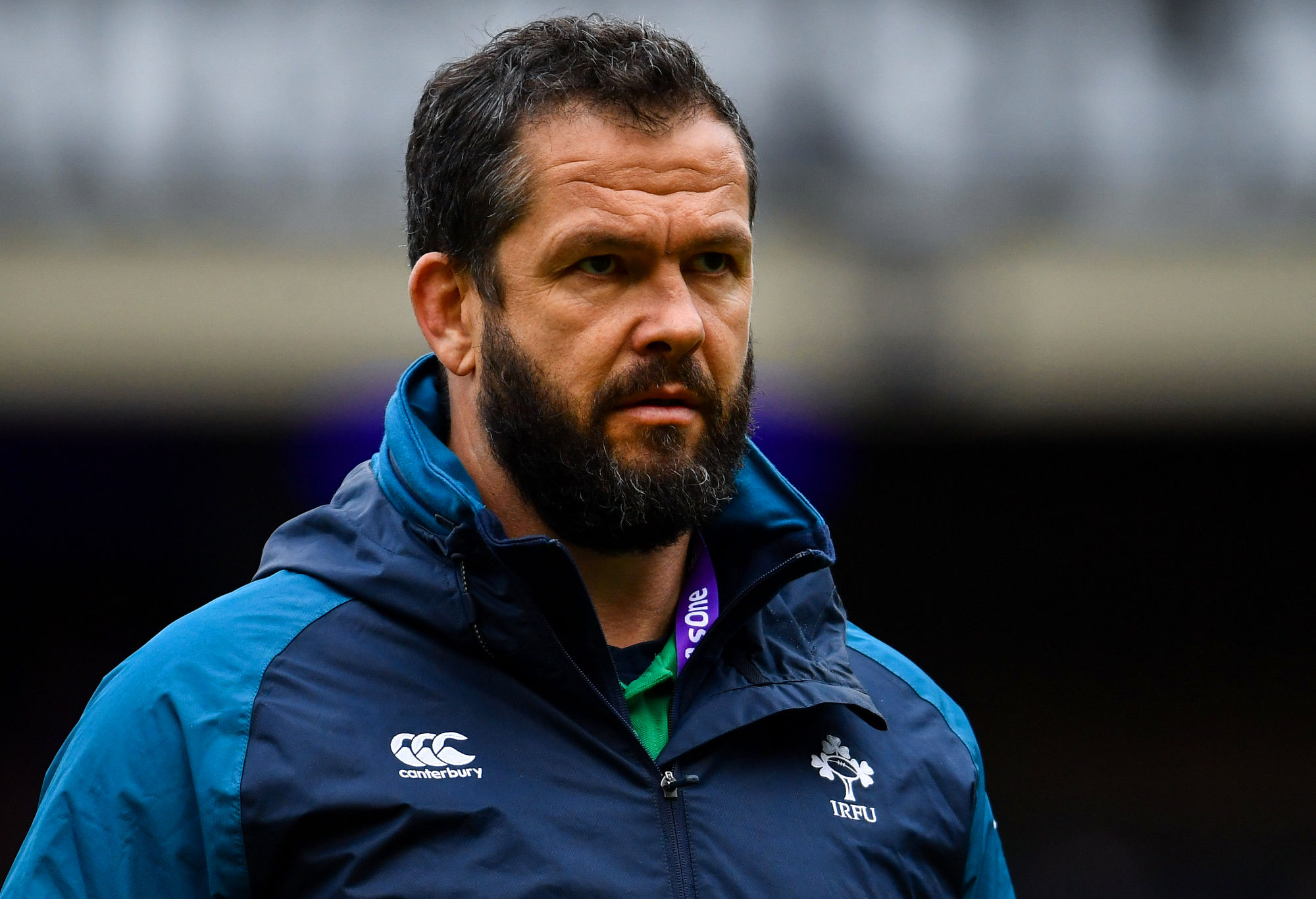It was the was the ultimate mix of old and new; and the greatest display of wet weather rugby we’re ever likely to see.
THE OLD
The old was Athletic Park, a unique, epic arena. A stadium so exposed to the elements on the high Berhampore Plateau, with low open terraces at either end pointing towards Cook Strait, Wellington Harbour and the infamous prevailing winds.
That uncovered, vertiginous, cool kids’ hangout the Millard Stand Top Deck offered million dollar views of the pitch, Mt Victoria and Inter-Island Ferry on a fine day. Today though Mr Hyde had replaced Dr Jekyll and spectators were subjected to a swaying, rain lashed, wind tunnel experience. Celebrated French sportswriter Denis Lalanne called the Home of Rugby both a “nightmare spectacle” and “wonderful.”
The storm of the day was Sou’easter. This was rugby as it used to be, mud soaked Wallaby gold almost indistinguishable from mud-soaked All Black. Yet Andrew Mehrtens’ jersey remained largely pristine.
THE NEW
However, if the venue and conditions were the old, the rugby itself was the new. For this was rugby played in the wet but it was nothing like traditional wet weather rugby. It was rugby from heaven with rookie Test head coach John Hart’s charges running the ball like Barbarians despite the mud, wind and rain. Against all the odds the error rate was minimal and Australia was run ragged to the tune of 43-6, six tries to nil.
“SANZAR rugby has arrived!” proclaimed Keith Quinn exultantly and what a way to launch the professional Tri Nations/Rugby Championship era. The game had never been like this.
One had to feel either sorrow or schadenfreude for their blown away opponents, especially aging superstar David Campese.
Fourteen years earlier this had been the scene of a teenaged Campo scoring possibly the greatest ever Wallaby try in a famous Australian victory. Now he was the cold, wet old guy with receding hair, trying in vain to cope with Jeff Wilson, Jonah Lomu and Christian Cullen running rings around him at the ages of 22, 21 and 20 respectively.
A CHAMPION TEAM OF OLD AND NEW
This brings us to the most potent mix of old and new – the All Black team. Nearly man Laurie Mains bequeathed an enviable mix of experienced forwards and centres and exciting young outside backs and halves that came so close to immortality in 1995. Add to that mix the master coach Hart and the unsurpassed electricity of Cullen and you have something very special indeed.
After the sustained magnificence of the McCaw era it’s easy for us to forget just how good this squad was. A full third of the Athletic Park team made the Sky Sports greatest ever All Black XV – three 1987 world champion forwards Sean Fitzpatrick, Michael Jones and Zinzan Brooke complemented by baby backs Lomu and Cullen.

Jonah Lomu runs the ball in the famous Bledisloe Test in Sydney in 2000. (AAP photo/Dean Lewins).
It was a team of legendary combinations. From the older generation we had the Auckland front row of Craig Dowd, Fitzpatrick and “concrete block” tighthead Olo Brown who dominated the early years of the Super 12.
Behind them were the Retallick and Whitelock of their day, mongrel Robin Brooke and beanpole Ian Jones. The blindside and eight were the phenomenally gifted Blues Michael Jones and Zinzan and holding together the backline were North Harbour’s “Brown Brothers” Walter Little and Frank Bunce.
What an incredible foundation, allowing the next generation of that stellar back three and Crusader halves Mehrtens and Justin Marshall to fit in seamlessly and brilliantly.

All Black Zinzan Brooke. (Photo by Ross Setford/Getty Images)
From the debut of Cullen and Hart until the oldies began to fade away, Hart’s legends dominated the rugby world. They lost only once in those first two years, and that was just a week after an exhausted Fitzpatrick famously used the last of his energy to pound the Pretoria turf behind his try line. His team had just succeeded where 70 years of All Blacks had failed, securing a first ever Test series win in South Africa.
PEAKING BETWEEN WORLD CUPS
The only real problem was that this was the start of the World Cup cycle and the overlap of these golden generations was all too short, with the younger generation heavily outnumbered. Already on the 1997 Northern Hemisphere tour Fitzpatrick was unable to overcome a knee injury and both he and Zinzan retired at the end of the year. The following year all four Tri Nations Tests were lost, as was the extra Bledisloe match.
By the time of the 1999 World Cup the side had fallen apart. The heart and class of the pack – the ’87 GOATS and Brown – had retired, leaving the team with a weak middle. The backline glue Little and Bunce had also gone, with Hart desperately wasting Cullen at centre to try to plug the gap. This was the birth of two sad All Black traditions – peaking between World Cups and trying to do without a specialist 13 at the big dance.
Their place at the top of the tree was duly taken by the Athletic Park fall guys Australia. Whereas less than half of their 1996 kiwi opponents played in the 1999 semi final loss, two thirds of the Cup Final winners came from the Wallaby squad. They held on to the Bledisloe for easily a record five series, their younger team definitely staying the full two mile Group One Cup race.
WHAT’S THIS GOT TO DO WITH IRELAND?
Now let’s move on from July 1996 to February 2024. This time it’s France and Ireland playing the first match of their first tournament after being knocked out of the World Cup. Only on this occasion it’s being played on a Friday night – perhaps the only time in history that the “final” of a championship has been held before its first weekend.
All history tells us that if Ireland is to beat France in France it’s going to be both a rare event and one almighty struggle. It had happened just three times in the last seventy years, each time by a margin of just two points. And this is the golden French generation, perhaps the most feted ever.
So in February 2024 few would have foreseen the comfortable dismantling of the much-celebrated French. OK, lock Paul Willemse was sent off in the first half but Ireland were already 14 points up by then. While not quite at the sublime 1996 Bledisloe level it was a statement performance and Ireland is now widely considered the best team in the Northern Hemisphere. This is another squad that could dominate rugby for the next couple of years.
Another thing that Ireland has in common with Hart’s heroes is continuity in selection from the previous World Cup cycle, with only one retirement after the quarter final loss to the All Blacks. The transition from one World Cup cycle to the next has been seamless in terms of both performance and personnel – indeed there wasn’t a single new cap in Andy Farrell’s entire 34 strong Six Nations squad.

Ireland defence coach Andy Farrell ahead of the Guinness Six Nations Rugby Championship match between Scotland and Ireland at the BT Murrayfield Stadium in Edinburgh, Scotland. (Photo By Ramsey Cardy/Sportsfile via Getty Images)
AGING LIKE THE 1996 ALL BLACKS?
This though is where plotting a route ahead for Farrell could become a bit more difficult. More than half of the starting fifteen and overall 23 against France were in their already in their 30s at the previous World Cup.
“That’s not so bad” you might say “South Africa had more players in their thirties and they won the Cup.”
As always, timing is everything. We’re comparing a team at the end of a World Cup cycle to one at the beginning. The winning Springbok fifteen had just one player aged 33+ whereas over half of Farrell’s current fifteen and 23 will be 34+ at the next World Cup. It seems inevitable that a significant proportion of the current team will not be there in 2027.
Farrell seems to be perfectly comfortable with that. He recently stated that he doesn’t “buy into the World Cup cycle,” preferring to continue the team’s evolution rather than “just cutting the legs off it and going again.” And who can blame him – Ireland has never had it so good so why spoil it?
Those 30-34 year olds are a genuine golden generation, probably Ireland’s best ever, and are bolstered by three key kiwi backs who qualified for Ireland under the old three year residential rule. There’s no guarantee that the next generation will have the same potential and it will be harder to source “project players” to fill anticipated gaps under the new five year rule. Now is the time to create history, for example to become the first team to win the Six, Five or Home Nations Championship three times in a row, and first country to win a test series in South Africa… since of course those 1996 All Blacks.
Farrell’s opinion of the next generation might be discernible from the age profile of his team. We’ve already seen that more than half of the current fifteen (and 23) were over 30 at France 2023… let’s also consider that over half of the rest of the fifteen (and 23) were 25 years old or under.
That leaves just three starters and five overall in their mid career 26-29 years of age. Like the All Black forwards that I wrote about last August in this article, this is a “donut” Ireland team with a lot of older players, quite a few younger ones and not many in between.
THE NEXT GOLDEN GENERATION IS RISING
Farrell’s plan might be to get the most from his golden oldies, then skip a generation to base his next great team on the players who were 25 and under last year.
The Englishman’s great advantage in 2024 over John Hart in 1996 might be that he has already started to blood the next golden generation, whereas New Zealand’s next batch of top forwards only began to arrive when Richie McCaw debuted over five years later. The likes of Dan Sheehan, Ronan Kelleher, Joe McCarthy, Caelan Doris, Jack Crowley and Mack Hansen are already top internationals, while Craig Casey, Ronan Kelleher, Ryan Baird and Tom O’Toole are getting good experience. The production line won’t end there either, with Ireland winning three of the last four Six Nations Under 20s Championships – their first wins since 2010.
This emerging generation might not be at its best by 2027… but they will be in 2031. None of the Irish players in the above paragraph will turn 34 until at least the following year – they and the Under 20s champions will be around their 28-33 year old peak. Andy Farrell might have hit upon the best chance for Irish short and long term success by maximising the careers of his current veterans and handing over to the real youngsters over the next few years.
CONCLUSION
The Fitzpatrick/Brooke generation of forwards and centres just missed out on winning the 1995 World Cup, but complemented by a great crop of young halves and outside backs they played some of the finest rugby the world has ever seen for the next two glorious years. Sadly they could not last until the following World Cup, while their replacements weren’t as good and were still inexperienced at test level in 1999. Australia took full advantage.
Watch every match of Super Rugby Pacific ad-free, live & on demand on the Home of Rugby, Stan Sport
The current Irish golden generation has also missed out on its big chance of winning the World Cup, but bolstered by a quality array of emerging talent it could dominate world rugby for the next two years. However, there is a real possibility that their many veterans could fail to reach 2027 en masse, and that the youngsters won’t be at the same level by 2027.
So far so similar to Hart’s heroes, but the big difference is that Ireland’s youngsters are strong in both the forwards and backs. The potential is there in the long term for more successful years – including a huge tilt at that painfully elusive pinnacle trophy in 2031.
































































































